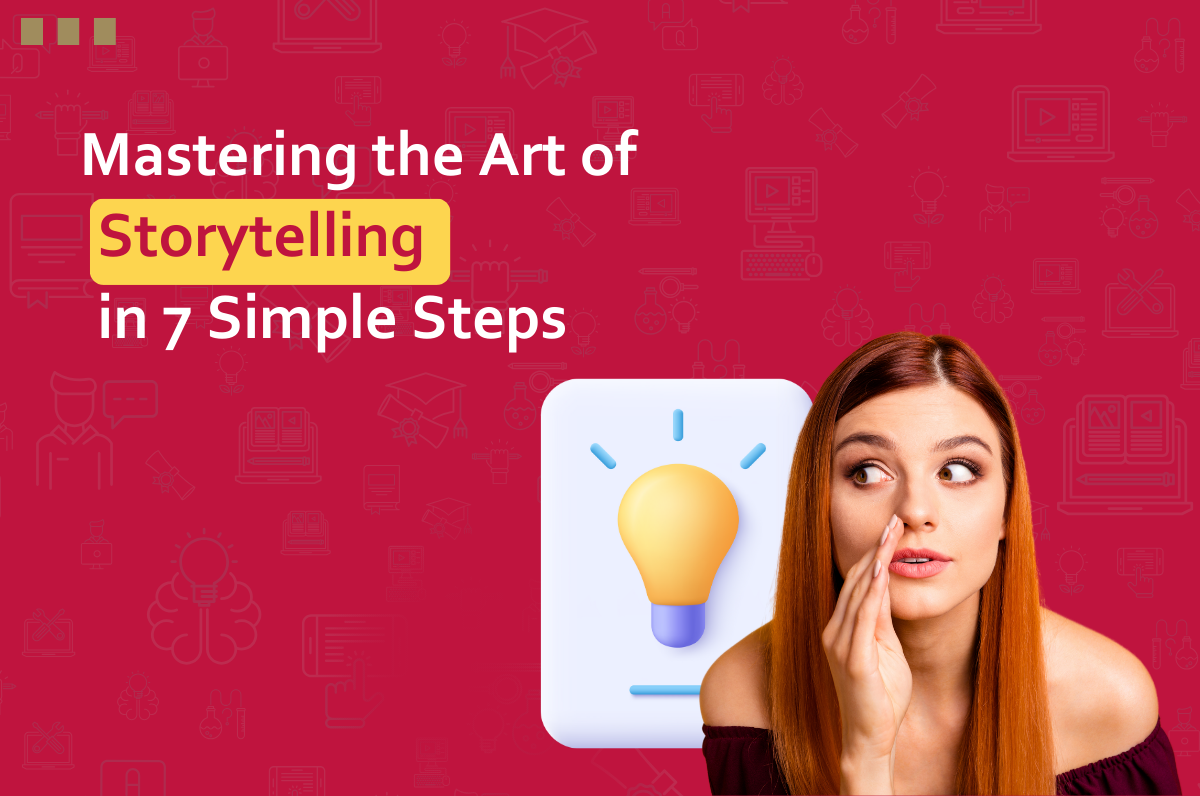Storytelling is a valuable skill that can enhance your communication abilities and help you connect with others. Whether you’re sharing experiences with friends, presenting ideas at work, or crafting marketing messages, storytelling can make your message more engaging and memorable. In this guide, we’ll explore seven simple steps to help you master the art of storytelling.
1. Understand the Role of a Storyteller
At its core, storytelling is about using language to share experiences and create connections with your audience. Whether you’re telling a personal anecdote or sharing a business case study, the goal is to engage listeners and make your message relatable and memorable.
2. Preparation is Key
Before you start telling a story, take the time to plan and prepare. Think about the key points you want to convey and how you can structure your story to make it compelling. Consider the needs and interests of your audience and tailor your story to resonate with them.
3. Engage with an Attention-Grabbing Introduction
The beginning of your story sets the tone for the rest of your narrative. Start with a hook that grabs your audience’s attention and makes them want to hear more. Provide context and set the scene to help listeners visualize the story in their minds.
4. Consider Timing and Audience Relevance
Be mindful of the context in which you’re telling your story. Consider the length of your story and how it fits into the overall flow of your presentation or conversation. Tailor your story to suit the interests and attention span of your audience.
5. Master Tone and Pacing
The way you deliver your story can have a big impact on how it’s received. Use your voice and body language to convey emotion and create suspense. Vary your pacing to highlight key points and maintain the audience’s interest.
6. Inject Emotion and Vivid Imagery
Emotion and imagery can bring your story to life and make it more compelling. Use descriptive language to paint a vivid picture in your audience’s minds and appeal to their senses.
7. Craft a Memorable Conclusion
End your story with a strong conclusion that ties everything together and leaves a lasting impression. Reinforce your main message and give your audience something to think about or act upon.
In conclusion, storytelling is a powerful tool that can help you communicate more effectively and connect with others on a deeper level. By following these simple steps, you can enhance your storytelling skills and become a more engaging and persuasive communicator.
Looking to harness the power of storytelling in the realm of digital marketing? Look no further than Incredible Point, the premier institute for digital marketing education. At Incredible Point, we offer comprehensive training programs designed to equip aspiring marketers with the skills and knowledge needed to thrive in today’s competitive landscape. With expert guidance, hands-on projects, and personalized support, we’re committed to helping you unlock your full potential as a digital marketer. Join us at Incredible Point and embark on a transformative journey towards success in the dynamic world of digital marketing.
FAQ
Q: Why is storytelling important?
A: Storytelling is important because it helps you connect with your audience on a deeper level. It makes your message more engaging, memorable, and relatable, whether you’re communicating with friends, colleagues, or customers.
Q: Can anyone become a good storyteller?
A: Yes, storytelling is a skill that can be learned and developed with practice. While some people may have a natural talent for storytelling, anyone can improve their storytelling abilities by following the right techniques and guidelines.
Q: How do I choose the right story to tell?
A: Choose a story that is relevant to your audience and the message you want to convey. Consider the purpose of your story and how it fits into the overall context of your communication. Look for stories that are engaging, relatable, and have a clear message or lesson.
Q: How can I make my storytelling more engaging?
A: To make your storytelling more engaging, focus on creating a strong introduction that grabs your audience’s attention, use descriptive language and vivid imagery to bring your story to life, and vary your tone and pacing to keep listeners interested.
Q: How long should my story be?
A: The length of your story will depend on the context in which you’re telling it and the preferences of your audience. In general, aim to keep your story concise and to the point, focusing on the most important details and avoiding unnecessary information.
For more Blogs – Best Lead Generation Course in Dwarka, Performance Marketing Course in Delhi, Best Content Marketing Course in Dwarka, Google Ads digital marketing in Dwarka

